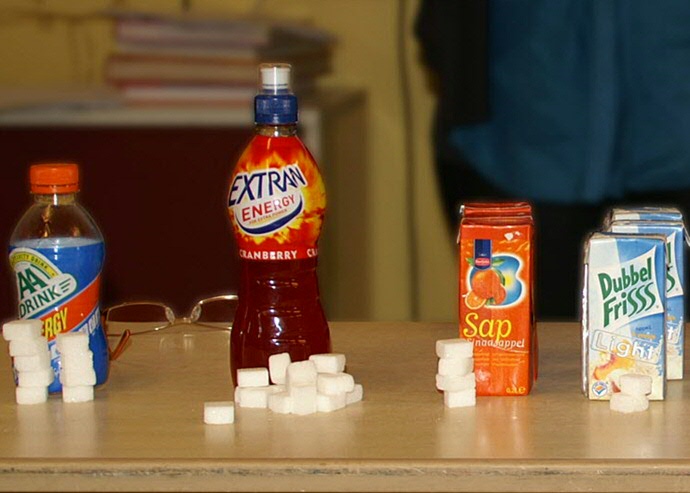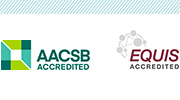How can we reduce sugar sales?

Text: Rob de Kam; source: Dagblad van het Noorden
Forty countries have already introduced a sugar tax as a strategy for curbing obesity. Is it helping, and should the Netherlands be following suit? Koert van Ittersum, Professor of Marketing and Consumer Well-Being, has his doubts.
Is sugar really such a problem?
‘Well, I’m not a nutritionist, but you only have to think about calories and how the body processes them to realize that sugar is clearly a huge problem. And our craving for sweet things is so strong. It’s maybe not the sugar itself we crave, but the sweetness. And a surprisingly large number of products contain lots of sugar. That makes sugar a major problem.’
Has sugar taken over from fat as the main villain?
‘Yes, but what’s important to me is not just what you eat. What’s even more important is how much you eat. It frustrates me that these two issues are often confused. At some point, even orange juice got a bad name because it contains so much sugar. But such a harsh approach will just lead to the average consumer saying, “O come on, if I can’t even enjoy a glass of orange juice because it has too much sugar in it, I give up. Let them get on with it …”. In America, they are now required to state on the packaging if sugar has been added to a product, apart from any natural sugars it may contain. That could be a step in the right direction, if it discourages producers from adding unreasonable amounts of sugar to our food.’

‘And what about sweets? They are pretty much pure sugar and we all know that can’t be good for us, but the important question is: how many sweets do you eat? In England they have the traffic light system – red, amber or green labels on packaging, indicating the product’s nutritional value. It is not compulsory, but quite a lot of manufacturers use it. If I have understood it correctly, they base it on 100 grams of the product in question. That makes it very easy to compare products, but what I don’t like is that it doesn’t take into account portions, so how much we eat of something. You can say that 100 grams of sugar is as red as red can be, but nobody’s going to tell you you have to eat 100 grams of sugar. Or, if you look at it the other way around, water gets a green label, but if you drink 5 litres of water in an hour, you’ll drop dead from water poisoning.’
Lots of countries have introduced a sugar tax, which has resulted in a decline in the consumption of sugary drinks.
‘True. But what is that sugar being replaced with? The assumption is that the people who are now consuming fewer sugary drinks have switched to drinking healthier alternatives instead. But there is at least one study indicating that in households where alcohol is consumed, there is a shift from sugary drinks to alcoholic drinks. That doesn’t strike me as beneficial. If you are aiming for behaviour change within a product category, you need to think very carefully about what kind of shift it is going to bring about. How are consumers going to compensate?’
‘I am most definitely not against imposing taxes. But in my opinion, the fundamental challenge lies in deciding when and where the government should intervene. Where do you draw the line? There are people who say supermarkets shouldn’t put sweets next to the till. Fine, but where should they put them? Should they stop selling sweets altogether? Okay, and what about crisps then? And sugary drinks? You can find arguments for removing half of all the products from supermarket shelves.’
‘Smoking raises similar questions. In some countries, you’re not allowed to smoke if there are children in the car. But what about in the home? Here, too, you have to ask yourself where to draw the line. And I think you need to give companies the chance to make their own improvements. The Albert Heijn supermarket has started coming up with some nice ideas, such as the “friswijzer”, a labelling system that indicates how much sugar the various soft drinks contain.’
Koert van Ittersum is Professor of Marketing and Consumer Well-Being at the University of Groningen and member of the Aletta Jacobs School of Public Health and the Healthwise Centre of Expertise in Groningen.
________________________________________________
> More news from the Faculty of Economics and Business
> FEB experts in the media


| Last modified: | 29 February 2024 10.02 a.m. |
More news
-
19 April 2024
New thesis prize for master's students of Economics and Business
How can we encourage economics and business students to deal with important societal challenges in their master's thesis? The 14 Dutch faculties of economics and business, united in the Council of Deans in Economics and Business (DEB), have set up...
-
18 April 2024
Ward Romeijnders appointed as Professor of Optimization under Uncertainty
The Faculty of Economics and Business is pleased to announce that Ward Romeijnders has been appointed as Professor of Optimization under Uncertainty. The chair is situated within the Department of Operations.
-
12 April 2024
Inaugural Lecture Corine Noordhoff: Future ready retail
In her inaugural lecture, Professor of Retail Marketing Corine Noordhoff will provide insights in the cornerstones for survival and adaptation in the retail sector. Noordhoff’s inaugural lecture will take place on Friday 19 April 2024, 16:15 –...
